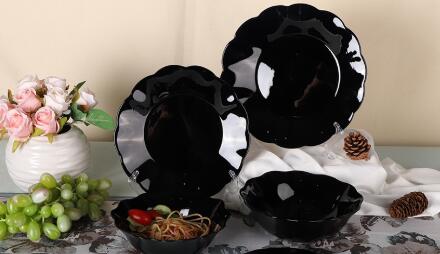Select an automatic glassware washer that makes sense
Pulished on Oct. 16, 2018
Congratulations: You and your client have decided that an automatic glassware washer should be included in the layout of your new or renovated laboratory. Your decision was a “green” and clean one. Hand washing uses ~20 gal of water to clean 30 pieces of glassware, while an automatic washer uses as little as 13.6 gal to wash the same amount. These savings add up to as much as 1,664 gal/year and could earn you one LEED point for Innovation in Design for nonregulated water use reduction.
Automatic glassware washers produce consistently cleaner glassware than hand-washing. A 2003 German study at the Univ. of Bonn compared cleaning results for hand-washed dishes soiled with minced meat and other food items compared with automatic machine-washed dishes soiled with the same contaminants. Visual comparison of average total surface counts of residual food particles showed that automatic washers cleaned better than a cross-section of hand washers from various European countries. The cleaning habits of the individuals tested varied widely. In contrast, automatic glassware washers give repeatable, clean results.
Now that you are confident that an automatic glassware washer is both green and clean, the next step is choosing the right one for your lab. Consider the following criteria to help you narrow your choices.
Today’s lab glassware washers offer an array of features to improve efficiency and reduce energy consumption. Photo courtesy of Labconco.
Energy and cost savings
Electrical requirements of glassware washers run the gamut from single phase-to three-phase, from 115V to 230V. If the lab is a renovation to an older building, three-phase electricity may not be readily available or would require a costly retrofit. A washer that uses singlephase electricity simplifies the installation.
By running the washer during off-peak hours— 10:00 p.m. to 6:30 a.m.— the lab can save up to $0.23/kWh in electrical costs depending on location. Look for a washer with a delay start option to facilitate running the washer at night.
A washer that includes a forced air/heated dry cycle vs. convection drying produces dry glassware without the need for (or expense of) a separate oven or drip rack, reducing handling and breakage of glassware.
Performance
Cleanliness is the ultimate test of an automatic washer’s performance. Laboratories conducting sensitive research demand contaminant-free glassware. EPA Methods 200.7, 524.2, 525.1 and 8270 may be used to test for residual metals, volatile organic compounds and semi-volatile organic compounds on washed glassware. Unlike the Univ. of Bonn study that measured visible residue left on dishes, the EPA methods test for microscopic residue more relevant to sensitive scientific research. Request EPA standardized residue data from the washer’s manufacturer, and check that the data represents current washer models and detergents.
An automatic washer with cycle flexibility should be considered because lab glassware may be soiled with a variety of substances. High-heat options allow cleaning heavy and difficult to remove soil such as waxes, oil or agar. For more soluble soils, high heat is not required. Washing plastic ware requires a low heat cycle to prevent warping. A washer with multiple wash cycles lets the user decide the wash intensity, thus using only as much water and heat as needed.
If sanitizing glassware is required, a washer that complies with NSF/ANSI 3 standards should be purchased. This standard states: “The water temperature has to reach 150ºF and maintain that temperature for 9 min for the sanitize cycle.” Choosing a washer that gives the user control over the water temperature and wash time can ensure proper sanitization.
For research sensitive to contamination from dirt, lint and other particulate contaminants, HEPA-filtered forced-air drying, which traps these contaminants in the air, is another desirable option. If validation is required for laboratory protocols, some washers provide an RS-232 port to communicate wash conditions to a printer or computer and a water conductivity monitor to confirm rinse-water cleanliness and effective detergent removal.
Flexibility
Variations in the types of glassware a washer can accommodate now and in the future is another important consideration. Spindle racks, which inject water and detergent inside the glassware, excel at cleaning flasks, graduated cylinders and other narrow-necked pieces. Some spindle racks also dry the inside of narrow- necked glassware by circulating warm air. Standard open racks are designed to be used with inserts holding a variety of general and specialized glassware types, such as beakers, BOD bottles and Petri dishes. For greatest flexibility, select a washer that can accommodate both spindle and standard racks.
Durability
Automatic glassware washers are designed to resist basic laboratory chemicals. Stainless steel chambers and racks withstand traces of chemicals used every day in a laboratory. In addition, other internal components, including detergent cups, seals, pumps, and other plastic and rubber components, should be designed to withstand chemicals and high heat conditions inside the washers.
In conclusion, those buying glassware washers should weigh many factors, including water consumption, electrical requirements, cleanliness, sanitization, flexibility and durability. Keeping these factors in mind will help you select the glassware washer that makes the best sense for your lab’s usage requirements.
Jenny Sprung is a senior product specialist at Labconco Corp. (www.labconco.com). The Kansas City, Mo.-based company provides a broad range of lab equipment, including glassware washers.
 Previous:
Tiffany Art Glass
Previous:
Tiffany Art Glass








